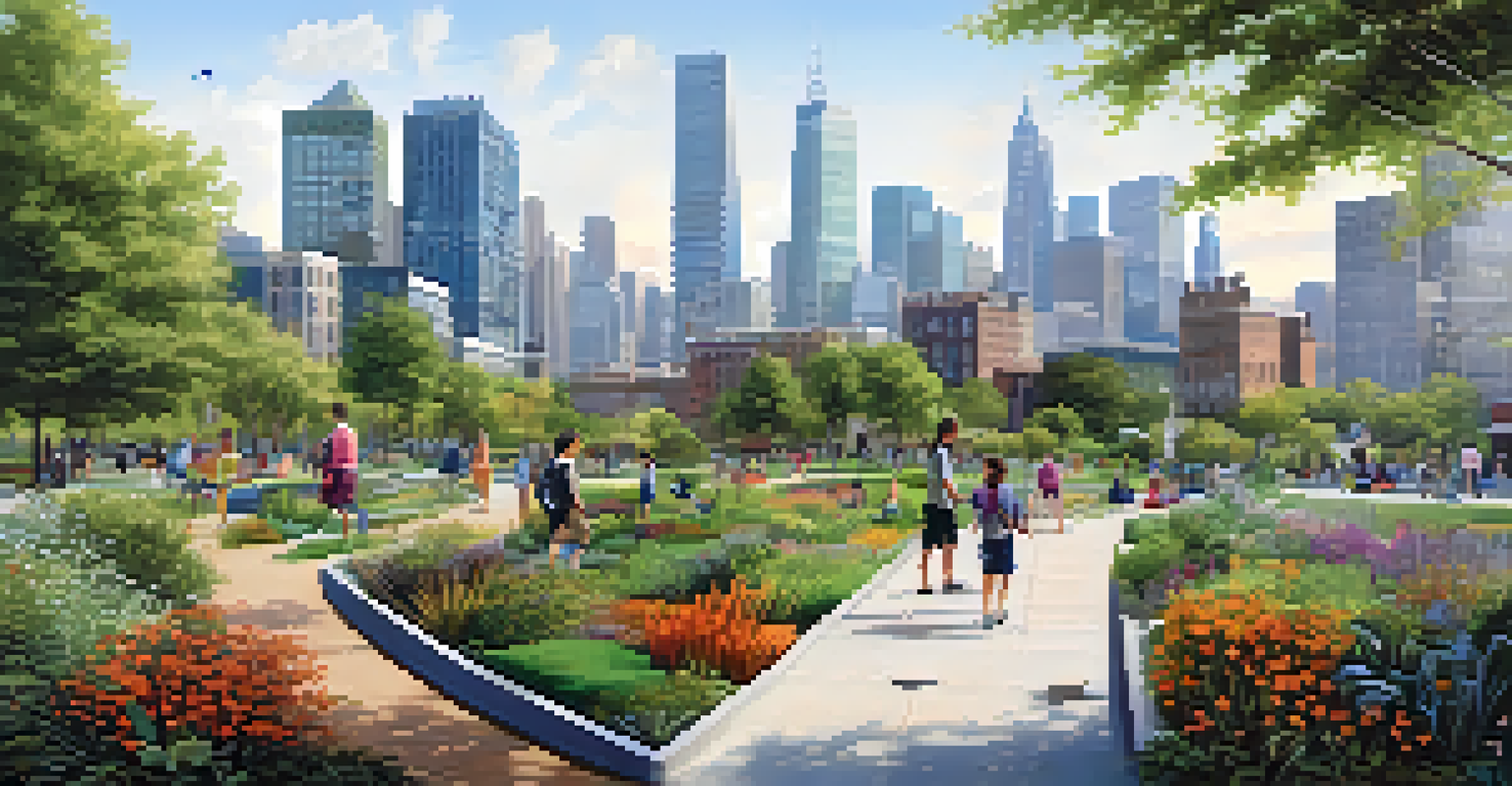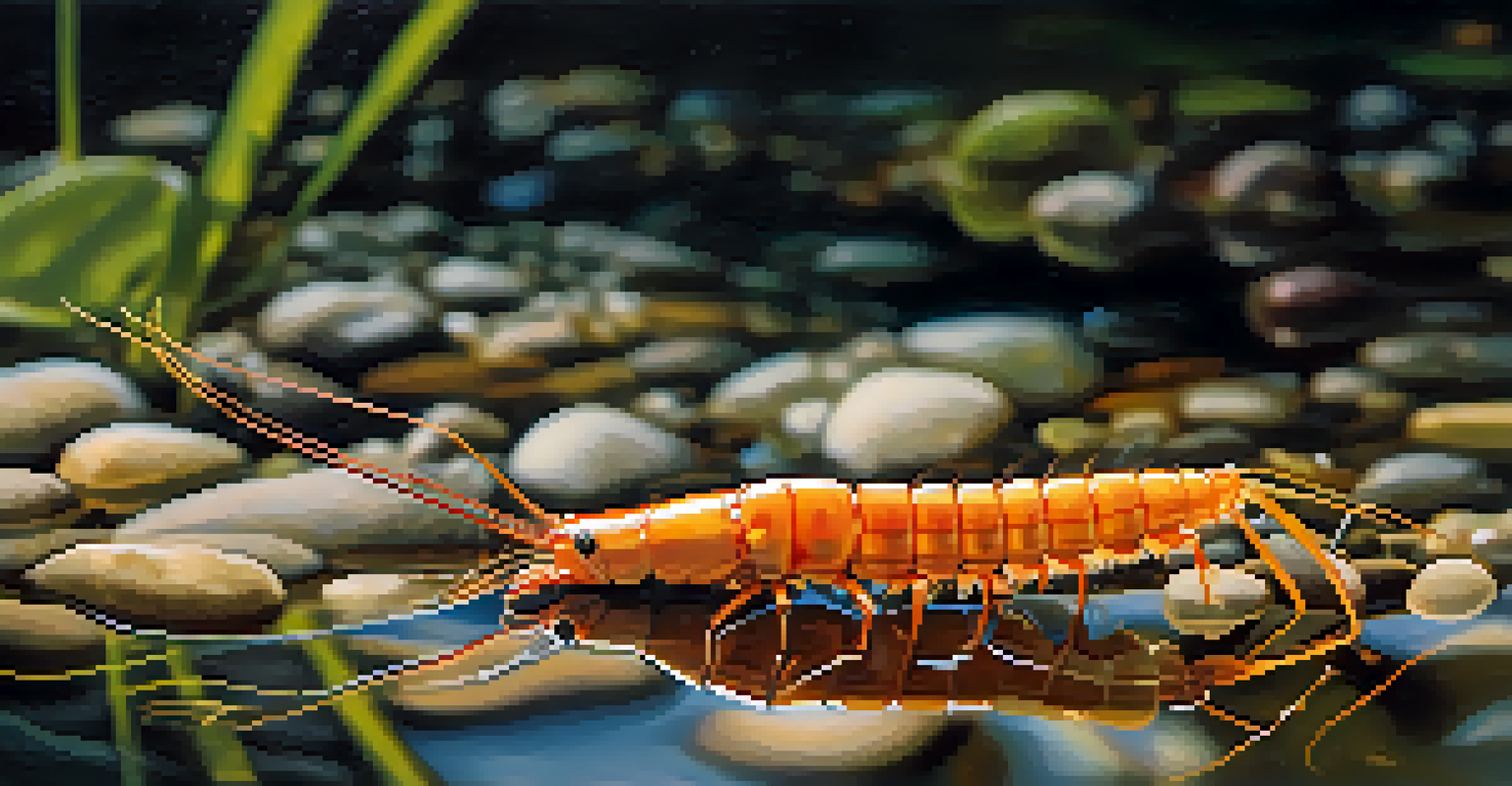Impact of Urban Development on California's Native Wildlife

Understanding California's Unique Ecosystems
California is home to a diverse range of ecosystems, from coastal beaches to towering mountains. These environments support an incredible variety of wildlife, including many species that are native and unique to the region. Unfortunately, urban development threatens these delicate ecosystems, disrupting habitats that wildlife depend on for survival.
The environment is where we all meet; where we all have a mutual interest; it is the one thing all of us share.
As cities expand, the natural landscapes that serve as homes for countless animals are transformed into roads, buildings, and infrastructure. This transformation can lead to habitat loss, which is a significant factor in the declining populations of native species. For instance, the California gnatcatcher, a small bird, faces challenges due to the destruction of coastal sage scrub habitats.
Understanding these ecosystems is crucial, as they are not just home to wildlife but also provide essential services to humans, such as clean air and water. Protecting these areas means safeguarding both nature and our own well-being, highlighting the need for sustainable urban planning.
The Role of Urban Sprawl in Habitat Fragmentation
Urban sprawl refers to the uncontrolled expansion of urban areas into surrounding regions, often leading to habitat fragmentation. This fragmentation creates isolated patches of habitat that can make it difficult for wildlife to find food, mates, and shelter. For example, a once-thriving population of mountain lions may find themselves cut off from other groups due to highways and developments.

As these animals become isolated, inbreeding can occur, reducing genetic diversity and making populations more susceptible to disease. Fragmentation also increases human-wildlife interactions, which can lead to conflicts and further endanger native species. The balance between urban growth and wildlife conservation is crucial for maintaining biodiversity.
Urban Growth Threatens Wildlife
As cities expand, urban development disrupts habitats, leading to loss of biodiversity and challenges for native species.
Effective urban planning strategies, such as creating wildlife corridors, can help mitigate these effects. By allowing animals to move safely between habitats, we can support their survival while accommodating urban development.
Pollution: A Hidden Threat to Native Wildlife
Pollution is another significant consequence of urban development that impacts California's wildlife. Runoff from roads can carry harmful chemicals and waste into local waterways, affecting aquatic ecosystems. Species like the California freshwater shrimp are particularly vulnerable to these changes in water quality, which can lead to population declines.
In nature's economy, the law of supply and demand is a law of the jungle.
Air pollution also poses a threat, as many native species are sensitive to changes in air quality. For instance, birds that rely on clear air for navigation during migration may find their journeys disrupted. Urban areas often create heat islands that can alter the local climate, further impacting wildlife.
Mitigating pollution through better urban practices, such as green infrastructure and sustainable transportation, can help protect these vulnerable species. By focusing on reducing our pollution footprint, we can create a healthier environment for both wildlife and humans.
Invasive Species: A Byproduct of Urban Growth
Urban development often brings with it the introduction of invasive species, which can outcompete native wildlife for resources. These species can thrive in disturbed habitats, leading to a decline in native populations. For example, the introduction of feral cats into urban areas has had devastating effects on native birds and small mammals.
Invasive plants, which may flourish in urban landscapes, can choke out native flora, disrupting food chains and habitats. The loss of native plants also means less food and shelter for local wildlife, leading to further declines in populations. Understanding the impact of invasive species is critical for protecting California's unique biodiversity.
Pollution Impacts Ecosystem Health
Runoff and air pollution from urban areas significantly affect the quality of habitats, endangering vulnerable wildlife.
Efforts to control invasive species through community initiatives and public awareness can make a difference. By educating residents about the importance of native plants and responsible pet ownership, we can help mitigate the effects of invasive species on our wildlife.
Climate Change: Exacerbating Urban Wildlife Challenges
Climate change is a significant threat to wildlife, and urban development can exacerbate its effects. Rising temperatures and changing precipitation patterns can alter habitats, making it difficult for native species to adapt. For example, California's iconic redwoods are facing increased stress due to prolonged droughts, threatening their survival.
Urban areas can amplify these effects through the heat island phenomenon, where cities become significantly warmer than surrounding areas. This can lead to altered migration patterns and breeding seasons for various species. Understanding how urbanization interacts with climate change is essential for creating effective conservation strategies.
Initiatives aimed at enhancing urban resilience, such as planting trees and creating green spaces, can help mitigate some of these impacts. By investing in our urban environments, we can create habitats that support both wildlife and human populations.
Community Involvement in Wildlife Conservation
Community involvement is crucial for the conservation of California's native wildlife. Local residents can play a significant role in protecting habitats through initiatives like community gardens and wildlife-friendly landscaping. These efforts not only support biodiversity but also foster a sense of connection between people and nature.
Education and outreach programs can empower communities to take action in their own backyards. Simple changes, such as reducing pesticide use or planting native species, can have a positive impact on local wildlife. Engaging residents in conservation efforts helps build a culture of stewardship for the environment.
Community Action Supports Conservation
Local residents can play a vital role in wildlife conservation through initiatives that promote biodiversity and habitat protection.
Moreover, community-led conservation initiatives can influence local policies related to urban development. When residents advocate for wildlife-friendly practices, they can help shape a future that balances urban growth with the needs of California's native species.
The Future of Urban Development and Wildlife in California
The future of urban development in California presents both challenges and opportunities for wildlife. As cities continue to grow, the need for sustainable practices becomes increasingly important. Thoughtful urban planning that prioritizes green spaces and wildlife corridors can help mitigate the impacts of development on native species.
Innovative solutions, such as vertical gardens and green roofs, can enhance urban environments while providing habitats for wildlife. These approaches not only benefit the ecosystem but also improve the quality of life for residents by promoting mental well-being and community engagement. Collaboration between urban planners, conservationists, and communities is essential for creating a balanced approach.

Ultimately, the goal should be to create urban spaces that coexist with nature. By prioritizing sustainability and wildlife conservation in our development practices, we can pave the way for a future where California's native wildlife thrives alongside urban communities.